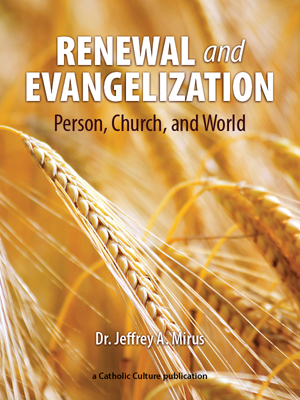Why Was Summorum Pontificum Issued?
By Dr. Jeff Mirus ( bio - articles - email ) | Jul 13, 2007
Whenever Rome issues any sort of disciplinary decree, especially one with widespread liturgical repercussions, it is important to understand exactly why the change was thought to be necessary or beneficial. In this entry, I examine the reasons Benedict himself gave for expanding the use of the 1962 Missal of Blessed John XXIII.
For a summary of what has been decreed, see What Does Summorum Pontificum Say?. For a consideration of the potential consequences, see Summorum Pontificum: What Will Its Impact Be?.
The Pope explained his reasons for issuing the Motu Proprio in an accompanying “Letter to the Bishops on the Occasion of the Publication of Summorum Pontificum”. Essentially, Benedict explains that he is taking these steps because he believes the liturgical reform of the late twentieth century was handled badly on three counts.
First and foremost, the way in which the novus ordo of the Mass was celebrated in many places alienated many faithful Catholics. “This occurred above all because in many places celebrations were not faithful to the prescriptions of the new Missal, but the latter actually was understood as authorizing or even requiring creativity, which frequently led to deformations of the liturgy which were hard to bear.” Benedict states the he is speaking from personal experience, having himself lived through this period of “arbitrary deformations” which “caused deep pain to individuals totally rooted in the faith of the Church.”
Moreover, Benedict explains that it became clear over time that neither this pain nor this attachment to the 1962 Missal abated with the passing of the last generation which had experienced it as the norm. Rather, “It has clearly been demonstrated that young persons too have discovered this liturgical form, felt its attraction and found in it a form of encounter with the Mystery of the Most Holy Eucharist.”
Second, Benedict believes that the Missal of 1970 was introduced in such a way that led the faithful to perceive an essential contradiction between it and the 1962 Missal. For Benedict, there can be no contradiction. “In the history of the liturgy there is growth and progress, but no rupture. What earlier generations held as sacred, remains sacred and great for us too, and it cannot be all of a sudden entirely forbidden or even considered harmful.” In other words, “the total exclusion of the new rite would not in fact be consistent with the recognition of its value and holiness.”
Third, Benedict believes that too often in the past, “not enough was done by the Church’s leaders to maintain or regain reconciliation and unity.” This is a matter of “coming to an interior reconciliation in the heart of the Church.” Citing St. Paul’s Second Letter to the Corinthians (6:11-13), Benedict concludes, “Let us generously open our hearts and make room for everything that the faith itself allows.”
To summarize, then, Benedict has issued Summorum Pontificum in order to emphasize the continuity of the Church’s liturgical tradition, to spiritually nourish those who are attached to the 1962 Missal, and to seek reconciliation of the divisions caused by deficiencies in the way in which liturgical renewal has been carried out since the Second Vatican Council.
All comments are moderated. To lighten our editing burden, only current donors are allowed to Sound Off. If you are a current donor, log in to see the comment form; otherwise please support our work, and Sound Off!








